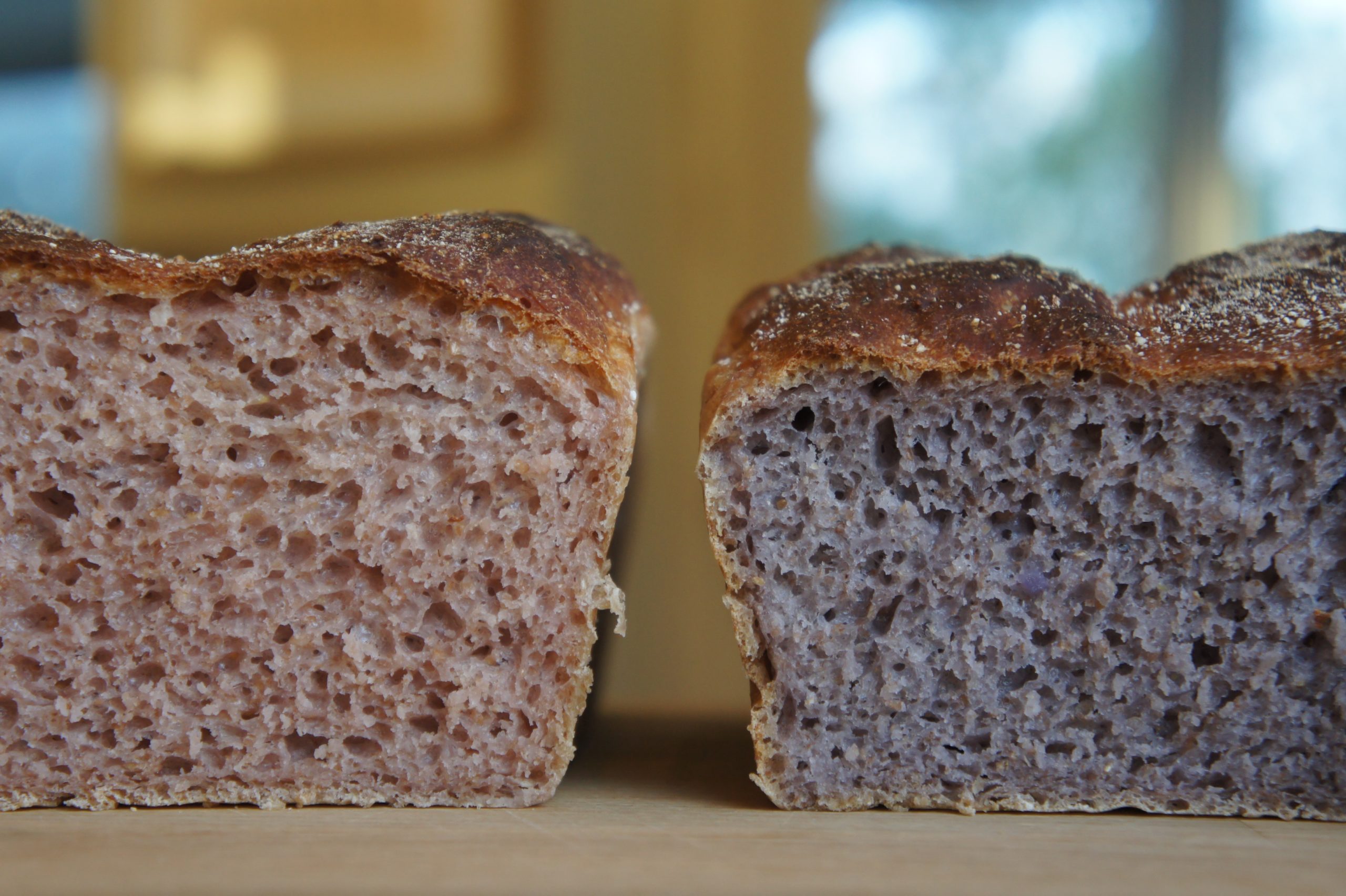This recipe was the first thing on my mind when we started producing our own flour. The combination of potatoes, flour and our cold pressed rapeseed oil comes together to make a light, airy loaf with a nutty, earthy tone that compliments warming soups perfectly. Great for the colder weather this recipe is definitely one to try and is suitable for beginners. As it’s us I’ve given this recipe a colourful twist by using some of our exotic varieties (Blue Anneliese for the purple bread and Heide Red for the pink loaf). If you’re looking for something more traditional I would recommend a nice white fleshed variety such as the reliable King Edward or fluffy Arran Victory to create a whiter wholemeal loaf.
Potato Bread
Preparation Time: 1 hour 30 minutes (plus breaks for proving)
Cooking Time: 30 minutes
300g Blue Anneliese potatoes (peeled weight)
1tsp dried fast-action yeast
1tsp caster sugar
1tbsp Cold Pressed Rapeseed Oil
1tsp fine sea salt
100g Strong Stoneground Wholemeal Flour
200g strong white bread flour
- Cut the potatoes into roughly similar sizes and place in a saucepan. Cover with just enough cold water that the potatoes are submerged and bring to the boil. Reduce the heat to a simmer and cook for 15 minutes, until the potatoes are tender.
- Drain the potatoes reserving the cooking liquid in a separate bowl. Return the saucepan with the potatoes in to the hob and, over a very low heat, gently toss to allow any excess water to evaporate. They need to be as dry as possible.
- Pour 5tbsp of the warm potato cooking liquid into a small bowl and allow to cool to a lukewarm temperature. Once it has cooled a little sprinkle in the yeast and stir in the sugar before leaving in a warm place for 10 minutes. You should find a delicate foam has appeared on the surface.
- Mash the potatoes with the oil until they are as smooth as possible before transferring to a large mixing bowl. Stir in the yeast mixture and the salt to create a relatively smooth consistency.
- Make sure the flours are well mixed before adding to the potato and yeast a few tablespoons at a time. It is easier to mix this in by hand, using a claw motion with your fingers to combine the wet and dry mixes.
- Once all of the flour has been incorporated turn out onto a lightly floured surface and begin to knead for roughly 10 minutes until the dough becomes soft and has an elastic quality to it.
- Place the dough in a lightly oiled bowl and cover with cling film. Leave to rise in a warm place for a minimum of 1 hour – how well or quickly your dough rises depends on the room temperature, it may need a little longer if the conditions aren’t quite right. You’re looking for the dough to at least double in size and for it to be light and spring back when you touch it.
- Turn the dough out onto a floured surface and knock back with your knuckles, releasing any air pockets that may have formed through the initial proving process. It may be quite sticky at this point – this is not a problem, just try not to handle it too much.
- I find this bread works best in a loaf tin, so I’d recommend transferring the dough to a lined tin and leaving it to prove for a further 30 minutes minimum. If possible, place in a large, sealable bag for this process (I use a freezer bag), making sure that the bag is lifted away from the dough and will not stick to it when it rises (I use cardboard supports to hold the bag up, away from the bread). This isn’t compulsory but I find this aids the proving process, keeping it warmer and therefore happier.
- Preheat the oven to 220°C (200°C Fan/Gas Mark 7) and place a dish of water in the bottom of the oven to heat up. (the steam will help you get a nice crust). Score the dough lightly with a sharp knife and flick some cold water over the surface before dusting with some wholemeal flour for additional texture. Bake in the centre of the oven for 30-35 minutes until well risen and crusty on top. Cool on a wire rack and enjoy the smell of freshly baked bread – and don’t be tempted to eat it all at once!
Sam.

